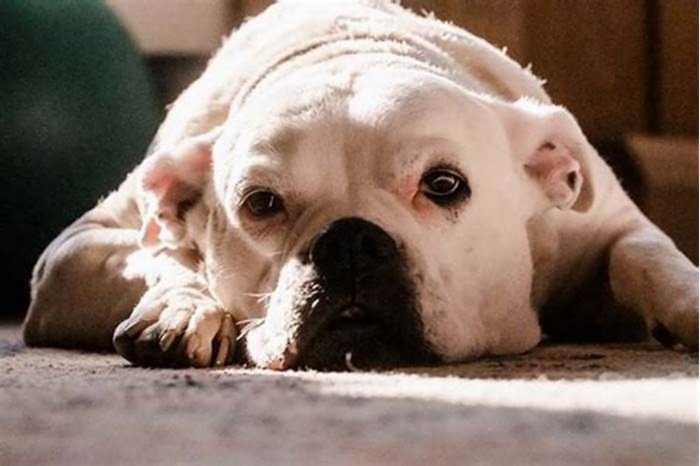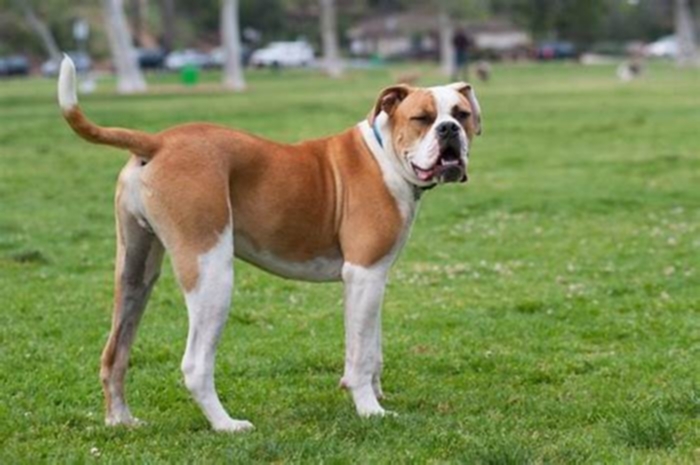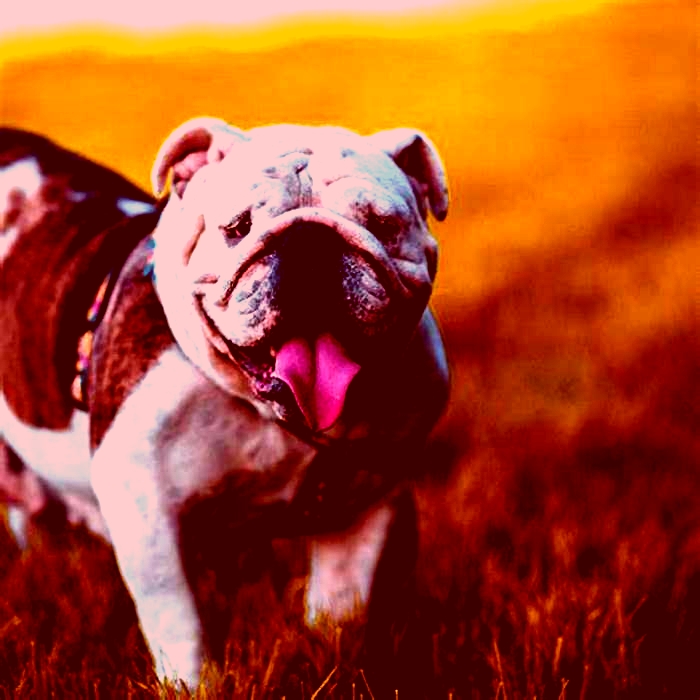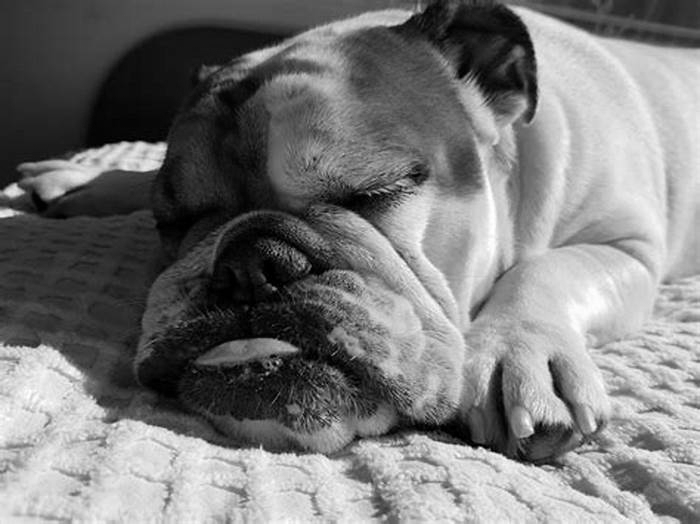Are English Bulldogs aggressive
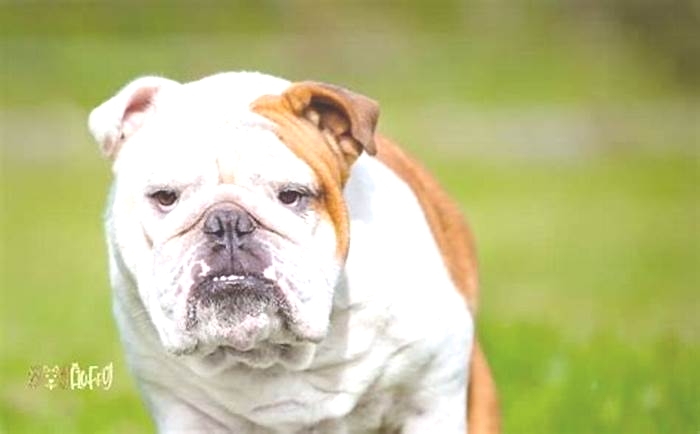
Understanding And Managing Aggressive Behavior In English Bulldogs
Affiliate disclosure: As an Amazon Associate, we may earn commissions from qualifying Amazon.com purchases
Discover the causes, signs, and types of aggression in English Bulldogs. Learn effective training techniques, management strategies, and how to address health factors contributing to aggression. Prevent aggression through early , neutering/spaying, and regular exercise.
Understanding Aggressive Behavior in English Bulldogs
Aggressive behavior in English Bulldogs can be a concerning issue for many pet owners. Bulldogs, known for their sturdy build and friendly nature, may exhibit various types of aggression. Understanding the different types, causes, and signs of aggression is essential in effectively addressing and managing this behavior.
Types of Aggression
Aggression in English Bulldogs can manifest in several ways, each with its own underlying triggers. It is important to identify the specific type of aggression in order to implement appropriate training and management techniques. Here are some common types of aggression seen in English Bulldogs:
- Territorial Aggression: Bulldogs may become protective of their living space, exhibiting aggression towards unfamiliar people or animals that enter their territory.
- Fear Aggression: Bulldogs may display aggression when they feel threatened or frightened. This can occur in response to specific situations, such as loud noises or unfamiliar environments.
- Possessive Aggression: Bulldogs may show aggression when they feel their resources, such as food, toys, or attention, are being threatened or taken away.
- Protective Aggression: Bulldogs, known for their loyalty, may exhibit aggression when they perceive a threat towards their family members or other pets in the household.
Causes of Aggression
Understanding the underlying causes of aggression in English Bulldogs is crucial in addressing and managing this behavior. While each dog is unique, there are some common factors that can contribute to aggression:
- Lack of Socialization: Bulldogs that have not been properly socialized with other dogs, animals, and people may be more prone to develop aggressive behavior.
- Fear and Anxiety: Bulldogs that experience chronic fear or anxiety may resort to aggression as a way to protect themselves or cope with stressful situations.
- Genetic Predisposition: Certain genetic factors may make some Bulldogs more predisposed to aggressive behavior. This can be influenced by their lineage and breeding history.
- Lack of Training and Structure: Bulldogs that have not received consistent and positive training may have difficulty understanding appropriate behavior, leading to aggression.
Signs of Aggression
Recognizing the signs of aggression in English Bulldogs is essential for early intervention and prevention of potential incidents. It is important to note that aggression can manifest differently in each dog, but here are some common signs to look out for:
Related: Are French Bulldogs High Maintenance? Grooming, Exercise, Health, Training, And Expenses
- Growling and Snarling: Bulldogs may emit low growls or snarls when they feel threatened or are displaying warning signs.
- Barking and Lunging: Bulldogs may bark aggressively and lunge towards people or other animals as a means of intimidation or protection.
- Stiff Body Posture: A tense and rigid body posture, with an erect tail and raised hackles, can indicate that a Bulldog is feeling aggressive or defensive.
- Biting and Nipping: Aggressive Bulldogs may resort to biting or nipping as a means of asserting dominance or protecting themselves.
It is important to remember that aggression in Bulldogs should not be taken lightly and should be addressed promptly. Seeking professional help from a qualified dog trainer or behaviorist is highly recommended, as they can provide tailored guidance and support in managing and modifying aggressive behavior in English Bulldogs.
In the next section, we will explore effective that can help address aggression in English Bulldogs, focusing on positive reinforcement, exercises, and behavior modification methods. Stay tuned for valuable insights on how to train your Bulldog and create a harmonious environment for both you and your furry companion.
Training Techniques for Aggressive English Bulldogs
Aggression in English Bulldogs can be a concerning issue for dog owners. However, with the right , it is possible to address and manage this behavior. In this section, we will explore three effective methods for training aggressive English Bulldogs: positive reinforcement training, socialization exercises, and behavior modification methods.
Positive Reinforcement Training
Positive reinforcement training is a highly effective approach when dealing with aggression in English Bulldogs. This technique focuses on rewarding desired behaviors rather than punishing unwanted ones. By using positive reinforcement, you can encourage your bulldog to exhibit good behavior while discouraging aggressive tendencies.
To implement positive reinforcement training, follow these steps:
Related: Why Are Pitbulls So Affectionate? Understanding Their Nature And Behavior
- Identify desired behaviors: Determine the specific behaviors you want to encourage in your English Bulldog, such as sitting calmly or playing gently with other dogs.
- Choose appropriate rewards: Find out what motivates your bulldog, whether its treats, praise, or playtime. Use these rewards to reinforce the desired behaviors.
- Timing is crucial: Reward your bulldog immediately after they exhibit the desired behavior. This helps them associate the action with the reward.
- Consistency is key: Be consistent in your training approach. Reinforce the desired behaviors every time they occur, gradually reducing the frequency of rewards as your bulldog becomes more accustomed to the behavior.
- Redirect unwanted behaviors: Instead of punishing aggressive behaviors, redirect your bulldogs attention to an appropriate alternative. For example, if they start growling at another dog, redirect their focus to a toy or a command like sit or stay.
By using positive reinforcement training, you can create a positive and enjoyable learning experience for your English Bulldog, helping them to overcome their aggression and develop good behavior habits.
Socialization Exercises
Socialization is a critical aspect of training aggressive English Bulldogs. By exposing your bulldog to various people, animals, and environments, you can help them become more comfortable and confident in different situations. Socialization exercises are an effective way to reduce aggression and improve your bulldogs behavior.
Here are some exercises to consider:
- Introduce your bulldog to different environments: Take your bulldog to new places, such as parks, beaches, or busy streets. Gradually expose them to different sights, sounds, and smells. This exposure helps them become more adaptable and less likely to react aggressively in unfamiliar situations.
- Arrange controlled interactions: Set up controlled interactions with other dogs, ensuring a calm and controlled environment. Start with well-behaved and friendly dogs and gradually introduce more challenging situations. Monitor your bulldogs behavior closely and intervene if necessary.
- Expose your bulldog to various people: Introduce your bulldog to different types of people, including adults, children, and strangers. Teach them how to interact politely and positively with others. Reward them for calm and friendly behavior.
- Provide positive experiences: Engage your bulldog in positive experiences during socialization exercises. For example, take them to a dog-friendly event or enroll them in a positive reinforcement training class. These experiences will help them associate new situations with positive outcomes.
Remember, socialization exercises should be approached gradually and at your bulldogs pace. Pushing them too quickly or overwhelming them with new experiences can potentially increase their aggression. Patience and consistency are key when socializing an aggressive English Bulldog.
Behavior Modification Methods
Behavior modification methods can be highly effective in addressing aggression in English Bulldogs. These techniques focus on altering the underlying causes of aggression and teaching your bulldog alternative behaviors.
Related: Managing American Bully Shedding: Causes, Prevention, And Solutions
Here are some behavior modification methods to consider:
- Identify triggers: Determine the specific situations or stimuli that trigger your bulldogs aggressive behavior. It could be the presence of other dogs, certain noises, or even specific individuals. Understanding the triggers helps you develop strategies to address them.
- Counter-conditioning: Counter-conditioning involves changing your bulldogs emotional response to the trigger. For example, if your bulldog becomes aggressive when encountering other dogs, gradually expose them to controlled and positive interactions with well-behaved dogs. Use positive reinforcement techniques to reward calm and non-aggressive behavior.
- Desensitization: Desensitization involves gradually exposing your bulldog to the trigger while keeping them below their aggression threshold. Start at a distance where your bulldog remains calm, and gradually decrease the distance over time. Pair these exposures with positive experiences and rewards to create positive associations.
- Seek professional help: If your bulldogs aggression persists despite your best efforts, it may be beneficial to consult a professional dog trainer or animal behaviorist. They can provide you with personalized guidance and develop a customized behavior modification plan for your bulldog.
When implementing behavior modification methods, it is crucial to remain patient and consistent. Modifying aggressive behavior takes time and effort, but with proper techniques and professional guidance, you can help your English Bulldog become a well-behaved and non-aggressive companion.
Managing Aggression in English Bulldogs
Supervised Interactions with People and Animals
Aggression in English Bulldogs can be a challenging behavior to manage, but with the right techniques, it can be effectively controlled. One important aspect of managing aggression in English Bulldogs is ensuring supervised interactions with both people and animals. By closely monitoring their interactions, you can prevent any potential aggressive incidents and ensure the safety of everyone involved.
When it comes to interactions with people, it is crucial to establish boundaries and rules. Bulldogs should be taught proper social manners from an early age. This includes teaching them to be gentle and respectful towards humans. It is essential to supervise their interactions with children, as Bulldogs can sometimes display possessive or protective behavior, which may lead to aggression. By closely monitoring their interactions, you can intervene if any arise and redirect their behavior towards more appropriate actions.
Similarly, it is important to supervise interactions with other animals. English Bulldogs have a strong prey drive, and their interactions with smaller animals should be closely monitored. Bulldogs may display aggressive behavior towards smaller pets, such as cats or rabbits, due to their natural instinct to chase and hunt. By supervising these interactions, you can prevent any potential harm to other animals and ensure a harmonious living environment.
Related: When Do French Bulldogs Calm Down? Factors, Signs, And Calming Techniques
Creating a Safe Environment
Creating a safe environment is crucial in managing aggression in English Bulldogs. A safe environment helps minimize triggers and reduces the likelihood of aggressive behavior. Here are some steps you can take to create a safe environment for your Bulldog:
- Identify Triggers: Pay close attention to situations or stimuli that trigger aggression in your Bulldog. This could include certain sounds, specific people, or even certain objects. By identifying these triggers, you can take steps to minimize their exposure or desensitize your Bulldog to them.
- Provide a Secure Space: Bulldogs should have a designated area in your home where they can retreat to when they feel overwhelmed or anxious. This space should be quiet, comfortable, and free from any potential triggers. It could be a crate, a specific room, or even a cozy corner with their favorite bed or blanket.
- Limit Access to Stressful Situations: Bulldogs may become aggressive in certain situations that cause them stress or anxiety. For example, they may become protective or territorial when strangers enter their territory. By limiting their access to these situations or gradually exposing them to such scenarios, you can help them feel more secure and reduce the likelihood of aggression.
- Provide Mental Stimulation: Bulldogs are intelligent dogs that require mental stimulation to prevent boredom and frustration, which can contribute to aggression. Engage them in interactive toys, puzzle games, or training exercises to keep their minds occupied and provide an outlet for their energy.
Creating a safe environment for your Bulldog is an ongoing process. As you become more familiar with their triggers and behaviors, you can make the necessary adjustments to ensure their surroundings are conducive to their well-being and minimize the risk of aggression.
Seeking Professional Help
If you find that managing aggression in your English Bulldog is becoming increasingly challenging or if their aggression is escalating, it is important to seek professional help. Consulting with a certified dog trainer or a veterinary behaviorist can provide valuable insights and guidance tailored to your Bulldogs specific needs.
A professional can evaluate your Bulldogs behavior, identify the underlying causes of aggression, and develop a customized training plan. They can teach you effective techniques to manage aggression, provide behavior modification strategies, and offer support throughout the process.
Remember, professional help should not be seen as a sign of failure but rather as a proactive step towards ensuring the well-being of your Bulldog and maintaining a harmonious living environment for everyone involved.
Related: Understanding The Olde English Bulldogge Temperament Alert
Health Factors Contributing to Aggression in English Bulldogs
Pain and Medical Conditions
English Bulldogs, like any other breed, can exhibit aggressive behavior due to various health factors. One significant factor is pain and underlying medical conditions. Bulldogs may become aggressive if they are experiencing discomfort or suffering from an undiagnosed medical issue. Its crucial for owners to be aware of the potential signs of pain or illness in their Bulldogs and take appropriate action.
- Some common signs of pain or medical conditions in English Bulldogs include:
- Excessive growling or snapping when touched in certain areas
- Reluctance to move or difficulty in getting up
- Changes in appetite or weight loss
- Limping or favoring a particular leg
- Excessive scratching or licking of a specific body part
If you notice any of these signs, its essential to consult with a veterinarian. A thorough examination can help identify any underlying medical conditions that may be causing aggression in your English Bulldog.
Hormonal Imbalances
Another health factor that can contribute to aggression in English Bulldogs is hormonal imbalances. Hormones play a crucial role in regulating a dogs behavior, and any disruption in this delicate balance can lead to aggression. Hormonal imbalances can be caused by various factors, including:
- Neutering or spaying: While or spaying is generally recommended for Bulldogs to prevent unwanted behaviors and health issues, it can sometimes lead to hormonal imbalances if not done correctly or at the right time.
- Thyroid problems: Hypothyroidism, a condition in which the thyroid gland doesnt produce enough hormones, can result in behavioral changes, including aggression.
- Adrenal gland disorders: Dysfunction of the adrenal glands can affect hormone production and contribute to aggressive behavior in Bulldogs.
If you suspect that hormonal imbalances may be contributing to your Bulldogs aggression, consulting with a veterinarian specialized in endocrinology is advisable. They can perform specific tests to assess hormone levels and recommend appropriate treatment or management options.
Related: Understanding The Bully With Ears Phenomenon: Impact, Signs, And Prevention
Genetic Predispositions
Genetics also play a significant role in determining a dogs temperament, including aggression. Some English Bulldogs may have a genetic predisposition towards aggressive behavior due to their lineage or breeding history. Its important to note that not all Bulldogs with aggressive tendencies have a genetic predisposition, but it can be a contributing factor.
- Responsible breeders: Choosing a reputable breeder who prioritizes temperament and behavior in their breeding program can help reduce the likelihood of genetic predispositions towards aggression.
- Lineage and pedigree: Researching the lineage and pedigree of a Bulldog can provide insight into any known instances of aggression or behavioral issues in their bloodline.
While genetic predispositions cannot be completely eliminated, they can be managed through early socialization and training. By providing a positive and nurturing environment for your Bulldog from an early age, you can help mitigate any potential genetic tendencies towards aggression.
Preventing Aggression in English Bulldogs
English Bulldogs are known for their strong and sometimes aggressive behavior. However, with proper prevention techniques, this aggression can be minimized or even eliminated. In this section, we will explore three key strategies for preventing aggression in English Bulldogs: early socialization and training, neutering/spaying, and regular exercise and mental stimulation.
Early Socialization and Training
Early socialization and training play a crucial role in shaping a Bulldogs behavior and preventing aggression. By exposing your Bulldog to various people, animals, and environments from a young age, you can help them develop positive associations and reduce the likelihood of aggressive behavior.
One effective way to socialize your Bulldog is through supervised interactions with other dogs and people. By gradually introducing them to different individuals and situations, you can teach them how to behave appropriately and safely. This can include visits to dog parks, playdates with well-behaved dogs, and supervised meetings with friendly strangers.
Related: Understanding Pocket Bully Temperament: Traits, Training, And Health
Training is another essential aspect of preventing aggression in Bulldogs. Positive reinforcement , such as rewards and praise for good behavior, can be highly effective. By focusing on positive reinforcement, you can encourage your Bulldog to behave in a desired way without resorting to punishment or force.
Neutering/Spaying
Neutering or your Bulldog can also be beneficial in preventing aggression. This procedure involves removing the reproductive organs, which can help regulate hormones and reduce aggressive tendencies. Neutering or spaying can also prevent certain health issues that may contribute to aggression, such as hormonal imbalances.
It is important to consult with a veterinarian to determine the optimal time for neutering or spaying your Bulldog. Generally, this procedure is recommended when they reach a certain age or maturity level. Your veterinarian can provide guidance on the best timing and any potential risks or benefits specific to your Bulldog.
Regular Exercise and Mental Stimulation
Regular exercise and mental stimulation are vital for preventing aggression in English Bulldogs. Bulldogs are a high-energy breed, and pent-up energy can manifest as aggression. By providing them with opportunities for physical exercise and mental stimulation, you can help them release energy in a healthy and non-aggressive manner.
Engaging in activities such as daily walks, play sessions, and interactive toys can help keep your Bulldog physically and mentally stimulated. Regular exercise not only helps burn off excess energy but also promotes a sense of calmness and relaxation. It is important to tailor the exercise routine to your Bulldogs age, health, and individual needs.
Related: Understanding American Staffordshire Terrier Shedding And How To Manage It
In addition to physical , mental stimulation is equally important. Bulldogs are intelligent dogs, and they thrive when given mental challenges. Incorporating puzzle toys, obedience training, and interactive games can help keep their minds sharp and prevent boredom, which can contribute to aggressive behaviors.
(Note: The information provided in this section is meant as a guide and should not replace professional advice. If you have concerns about aggression in your Bulldog, it is recommended to consult with a qualified veterinarian or animal behaviorist.)

